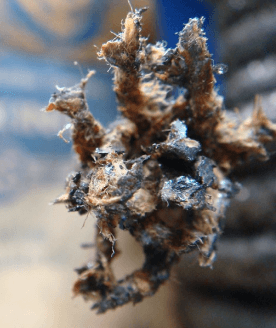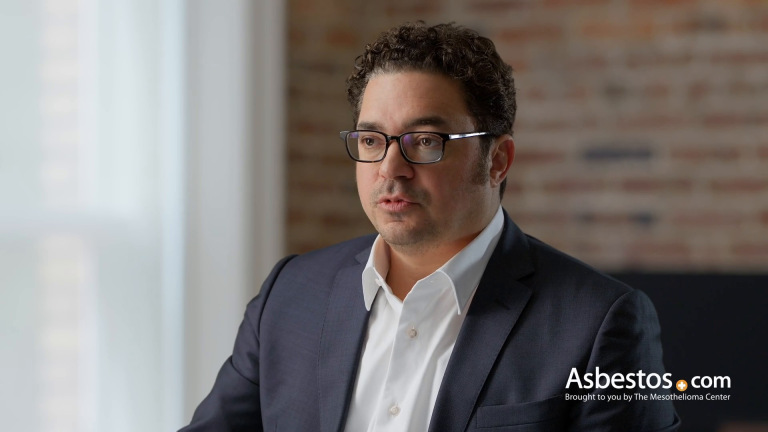DII Industries
Halliburton filed for bankruptcy in 2003 and established the DII asbestos trust to provide compensation to claimants. The trust holds $2.5 billion in cash and Halliburton Company shares. The current Halliburton asbestos trust claim is paid at 60%.

DII Industries Asbestos History

DII Industries’ history with asbestos dates back to Harbison-Walker, a company that manufactured firebricks and other asbestos-containing materials since the 1860s. Halliburton Company, known for providing products and services for the oil, gas and other energy industries, is the parent organization of DII Industries.
Halliburton’s acquisition of companies that used asbestos such as Harbison-Walker, Dresser Industries Inc. and Kellogg Brown and Root Inc. had serious ramifications. The transfer of legal ownership made all asbestos claims against these subsidiaries the legal responsibility of Halliburton.
Workers from these companies had a high risk of asbestos exposure from the manufacture and use of products containing asbestos. High-risk occupations included welders, pipefitters and boilermakers. Those who worked with insulation, contributed to the manufacturing process or performed maintenance also had consistent exposure danger.
Close family members experienced secondary exposure from asbestos fibers found on the workers’ clothing, skin or hair. These fibers transferred to other family members and entered into the air during normal activities such as handling clothes or doing laundry.
Thousands of asbestos claims caused Halliburton significant financial losses. The company eventually filed for Chapter 11 bankruptcy on Dec. 16, 2003, and it established a trust to pay asbestos liability claims. Today, the DII Industries LLC Asbestos PI Trust is liable for all asbestos exposures from these companies and other businesses Halliburton owned.
Halliburton, Harbison-Walker and Dresser Industries
Harbison-Walker, established in 1865, manufactured products with asbestos into the 1970s. Dresser Industries Inc., a company that provided a range of services and asbestos products to the oil and gas industries, merged with Harbison-Walker in 1967. Asbestos lawsuits against both these companies began to increase in the 1990s.
In 1998, the combined companies merged with oil pipeline servicing company Halliburton in a $7.7 billion deal. Part of the deal was to obtain help from Halliburton, then run by Vice President Dick Cheney, to handle the increasing volume of asbestos lawsuits. The merger initially appeared to be an excellent business move, but the increasingly overwhelming volume of asbestos claims made against Harbison-Walker and Dresser Industries soon underscored Halliburton’s new liabilities.
Halliburton received more than 300,000 claims from Dresser Industries alone. By the early 2000s, the company couldn’t keep up with settlement payouts, so Halliburton filed for bankruptcy and set up the trust as part of its restructuring efforts.
DII Industries Asbestos Trust Fund
The Halliburton asbestos trust was officially called the DII Industries LLC Asbestos PI Trust since its creation on Jan. 20, 2005. It was part of the DII Chapter 11 Joint Plan of Reorganization. The purpose of the trust is to pay compensation to eligible claimants who developed diseases from asbestos exposure caused by the subsidiaries of Halliburton Company, including Harbison-Walker Refractories Company and Dresser Industries Inc.
The totality of the trust’s assets serves the sole purpose of paying out current and future asbestos claims. The trust holds $2.5 billion.
The Trust Distribution Procedure establishes criteria to verify claims and calculate the Halliburton asbestos trust payment percentage issued to claimants. The payout amount varies by disease. Currently, expedited review claims pay out at 60%. Individual reviews take longer to process and may result in a claim greater or less than the 60% payment percentage.
The trust requires all claimants submit the claim form along with verification of their medical diagnosis and exposure to qualify. Proof of exposure by DII and other businesses DII is legally responsible for must have happened before Dec. 31, 1982. Claimants can file by mail or use Trust Online to expedite the process. The trust typically reviews claims within 6 months. Once reviewed, the claimant gets an offer letter to sign and return. Payment is generally sent out within 1 to 2 months after the trust receives the signed Allowance Letter and Release.

Get help paying for mesothelioma treatment by accessing trust funds, grants and other options.
Get Help NowDII Industries Jobs at Risk of Asbestos Exposure
Occupational asbestos exposure is responsible for most cases of malignant mesothelioma. Workers who handled asbestos directly were at the highest risk of developing asbestos-related diseases. Any workers whose job duties placed them in areas contaminated by asbestos fibers were also in danger.
- Boilermakers
- Brickmakers
- Cement workers
- Construction workers
- Electricians
- Engineers
- Manufacturing plant workers
- Masonry workers
- Metal workers
- Miners
- Oil refinery workers
- Pipefitters
- Shipyard workers
- Train workers
- Truck drivers
Asbestos exposure was a common occurrence in many job duties in both Harbison-Walker and Dresser Industries. Although current asbestos regulations limit the use of asbestos and enforce strict safety protocols, new cases of mesothelioma and other asbestos-related diseases continue to emerge in former employees. This is because the latency period of such diseases is 20 to 60 years after the exposure occurred.
DII Industries Products That Contained Asbestos
Companies under DII Industries produced many asbestos-containing products. Workers experienced exposure through handling raw materials, manufacturing products, packing and transporting finished goods.
- Alco locomotives
- Asbestos millboard
- Asbestos rope
- Chromepak G
- Clark compressor
- Dresser pump
- Drilling muds
- Fire bricks
- Galion cranes
- HW mineral fiber coating
- Lightweight Castable 10
- Micacrete 7
- Moore turbine
Halliburton itself never manufactured asbestos products, but both Harbison-Walker and Dresser Industries did. Halliburton inherited all legal responsibilities for its subsidiaries when the companies merged, making it culpable for all past asbestos exposure risks from materials and the work environment.
Notable Lawsuits Against DII Industries
Asbestos lawsuits against Halliburton reached hundreds of thousands by the early 2000s. While these verdicts were a win for claimants and set necessary precedents for future cases, the volume of claims caused Halliburton’s stock to plummet.
The company made the decision to file for bankruptcy and restructure in an effort to stay in business. It created the DII asbestos trust to stop the lawsuits and establish an available fund to pay out compensation to claimants.
- $900 million: Total settlements paid out by Halliburton in 2002-2004, before the courts approved its bankruptcy.
- $112 million: The total of asbestos verdicts issued against Harbison-Walker in 2001, excluding the $40 million from another lawsuit.
- $40 million: Amount of an asbestos verdict award to 5 claimants from Harbison-Walker.
Claimants who seek compensation from the Halliburton asbestos trust for asbestos-related illnesses should work with an experienced asbestos or mesothelioma lawyer. These attorneys specialize in asbestos claims and can assist in the filing process. They often have access to resources that make it easier to prove claims, resulting in better outcomes for claimants.
Recommended Reading



